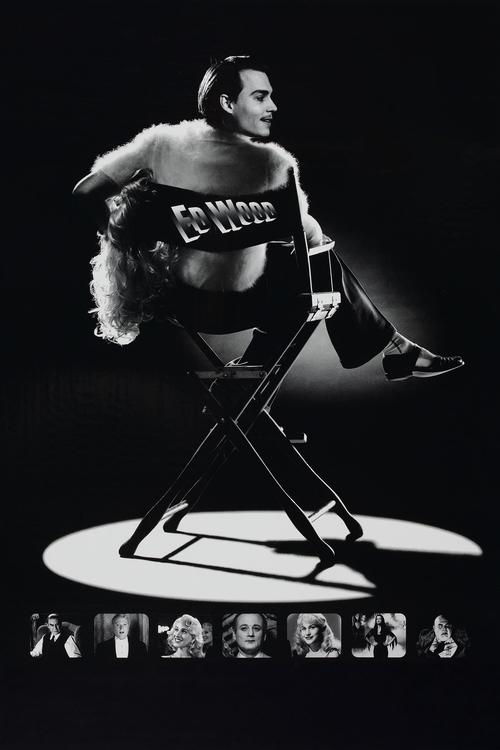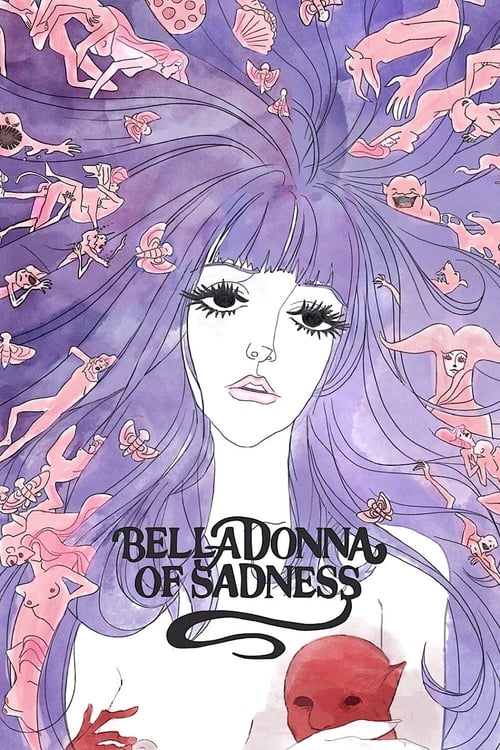
Monty Python's The Meaning of Life
Life's questions are 'answered' in a series of outrageous vignettes, beginning with a staid London insurance company which transforms before our eyes into a pirate ship. Then there's the National Health doctors who try to claim a healthy liver from a still-living donor. The world's most voracious glutton brings the art of vomiting to new heights before his spectacular demise.
Dialogues from Movie Monty Python's The Meaning of Life
Quotes from Movie Monty Python's The Meaning of Life
Sound Tracks from Monty Python's The Meaning of Life by John Cleese, Eric Idle, Graham Chapman, Terry Jones, Terry Gilliam, Michael Palin
The Meaning of Life
The Meaning of Life by Monty Python, Main theme song in the film
Every Sperm is Sacred
Every Sperm is Sacred by Monty Python, Performed during the family planning segment
Galaxy Song
Galaxy Song by Monty Python, Sung during the segment on the universe
The Penis Song
The Penis Song by Monty Python, Performed in the 'Live Organ Transplants' segment
Download App
Memorable Scenes from Movie Monty Python's The Meaning of Life
The Meaning of Life Song
This opening scene sets the tone for the entire film. The characters engage in a cheeky song about the meaning of life, exploring its complexities with humor and irreverence. It showcases each character’s perspective, reflecting their desires and confusions about existence. The colorful visuals and comedic delivery build anticipation for the philosophical journey ahead.
Context: As soon as the movie starts, viewers are confronted with the fundamental question of the film: what is the meaning of life? This humorous exploration invites viewers to think critically about their own lives.
The Creation of Life
A hilarious portrayal of God creating the universe, with absurd decisions and whimsical choices. At a pivotal moment, God invents dinosaurs with a nonchalant attitude, showcasing the randomness of existence. The beautifully crafted visuals contrast with the ridiculousness of the narrative, creating a memorable exploration of creation.
Context: The scene challenges traditional biblical interpretations of creation, poking fun at the complexities of existence and setting up the theme of absurdity present throughout the film.
The Universe Explained
The character mentions billions of galaxies and stars in an overly simplified and humorous way. This moment peaks when the narrator humorously declares that life emerged from a primordial soup. The absurd visuals of microbes evolving into humans are captivating and playful, which balances the heaviness of the topic.
Context: This depiction of the universe and life's origins emphasizes the film's satirical take on religion, science, and the struggle to define existence, reinforcing the overarching theme.
The Incomplete Life of Mr. Creosote
In this grotesque and unforgettable segment, Mr. Creosote's indulgence leads to an explosive and comical climax. Tension builds throughout as he consumes an endless meal, culminating in his tragic but absurd demise. The scene balances dark comedy and social commentary about excess and gluttony.
Context: This moment mirrors society's obsession with consumption and excess, highlighting how self-indulgence can lead to dire consequences, which resonates deeply within the film's message.
The Fish Shop
In a seemingly innocuous scene, a fishmonger interacts with a customer, but it quickly turns surreal with the introduction of outrageous fish-related demands and nonsensical dialogue. The interaction transforms into a comedic chaos that leaves viewers laughing and bewildered.
Context: This moment is reflective of the everyday absurdities and miscommunications that permeate life, reinforcing the film’s theme of finding meaning in the absurd.
The Afterlife
This scene depicts a bureaucratic afterlife filled with waiting rooms, paperwork, and humorously mundane encounters. The frustration of the characters reveals a satirical take on the afterlife as they discover it’s more tedious than they ever imagined. A key moment occurs when one character humorously declares, 'It's worse than life!'
Context: It exemplifies the absurdity of existence, challenging the traditional notions of heaven and hell, which adds to the film’s overall critique of life’s searching for meaning.
The Life Cycle
This segment portrays the life stages from birth to death in a series of comedic and absurd vignettes. The pivotal moment comes when a character reflects on dying with a profound yet humorous line about regret. Each life stage is depicted not as a solemn event but as a series of ridiculous situations.
Context: It underscores the fleeting nature of life and the often absurd experiences we go through, reinforcing the notion that the quest for meaning is filled with laughter and irony.
School of Life
A classroom scene where absurd life lessons take the forefront, including a hilarious but dark instruction on death and sex. The climax occurs when the students are left utterly confused about their learning. The dialogue and characters’ reactions emphasize the absurdity of education.
Context: This situation critiques traditional education's approach to significant life topics, highlighting the dissonance between learning and real-world experiences.
The Meaning of Life Explained
The characters engage in a mock-serious debate about the true meaning of life, expressing conflicting views filled with humor. The scene peaks with exaggerated claims about finding meaning through wealth, pleasure, and relationships—culminating in a chaotic and exaggerated conclusion.
Context: This moment summarizes the film's thematic exploration of life's meaning, showing how different individuals superficially approach it without any genuine answers.
Birth and Death
A mother is shown going through the process of childbirth, only for it to be interrupted by the absurdity of a funeral next door, playing off the themes of life and death. The jarring interference highlights the cyclical nature of existence and the humorous clash of life’s serious events.
Context: It emphasizes how intertwined life's most significant experiences can be, reinforcing the notion that humor exists even in the most serious times.
The Dinner Party
A family gathers for a meal filled with humorously inappropriate conversation. The scene escalates into chaotic disagreements and absurd opinions around life and existence, culminating in a farcical rant about the meaning of life over dinner.
Context: This scene serves to spotlight familial dynamics and the absurdity of human communication, contributing to the film’s exploration of relatability and humor.
The Meaning of Life Final Thoughts
The film ends with a grand musical number, reflecting on life’s absurdities. The message that life's meaning is found in simple joys and humor resonates deeply as characters joyfully emphasize their chaotic journey. The uplifting visuals contrast with previous dark humor.
Context: This concluding musical piece encapsulates the entire narrative, leaving viewers with a sense of satisfaction despite the chaos, emphasizing that finding joy in absurdity is worthwhile.
The Last Supper
A parody of the Last Supper scene, where characters oddly express their regrets and ponder their mistakes. The moment becomes hilariously ironic as they encounter absurd reasons for their choices, culminating in laughter amid the seriousness of the moment.
Context: This scene offers a critique of how we reflect on our lives, inviting viewers to recognize the absurdity in their struggles.
The Sperm Song
An elaborate and comical musical number narrates the journey of sperm in a humorous, exaggerated fashion. The peak occurs when the illustrations become wildly absurd and whimsical, highlighting life's beginnings comically.
Context: This serves as a lively exploration of creation, establishing a humorous take on the often serious theme of reproduction and evolution.
The Final Judgment
In a courtroom-like setting, characters present absurd arguments defending their lives. The intensity of their defenses humorously contrasts with the outlandish claims made, showcasing the ridiculousness of justifying one’s existence.
Context: This encapsulates the struggle of making sense of life’s experiences, reinforcing the film’s overall themes about the absurdity of existence.
The Experience of Hunger
A humorous depiction of hunger experienced throughout life, from childhood to adulthood, ultimately leading to an elaborate feast. The climax arrives when characters feast grotesquely, merging comedy with critiques of consumption.
Context: This segment critiques consumer culture, exploring how hunger—both physical and existential—drives human behavior.
The Nature of Love
A comical series of scenarios examining love and relationships, absurdly portraying romantic encounters and misunderstandings. The humor peaks with ridiculous behaviors and exaggerated gestures of love.
Context: This segment highlights the absurdity in romantic pursuits, adding depth to the exploration of human connection.
The Golden Age
A whimsical and absurd portrayal of aging, accompanied by a comedic song that reflects on the challenges and pleasures of growing older. The humorous conversations focus on ridiculous concerns that overshadow serious life moments.
Context: This commentary on aging provides an amusing yet insightful perspective on navigating life’s later stages.
The Foolishness of War
This segment parodies war through absurd humor and exaggerated situations. Tensions rise with caricatured soldiers and outrageous battle strategies, confronting the absurdity of conflict.
Context: It comments on the trivialities of human conflict, exposing the ridiculousness behind warfare and the search for purpose amid chaos.
Download App







